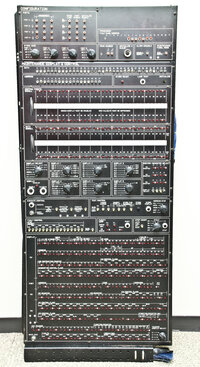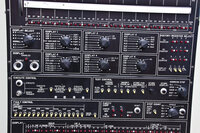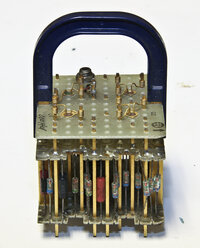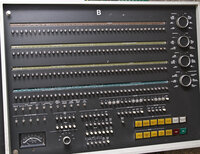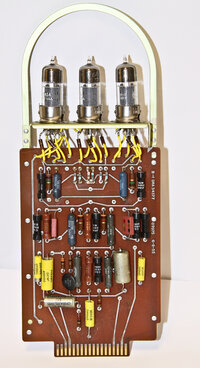 |
Glenn’s Computer Museum |
| Home | New | Old Military | Later Military | Analog Stuff | IBM Stuff | S/3 Mod 6 | S/32 | Components | Encryption | Misc | B61 |
change log |
contact me |
![]()
 |
Glenn’s Computer Museum |
| Home | New | Old Military | Later Military | Analog Stuff | IBM Stuff | S/3 Mod 6 | S/32 | Components | Encryption | Misc | B61 |
change log |
contact me |
![]()
Before there were discs, magnetic drum memory was the state-of-the-art storage device. In fact, earlier computers like the IBM 650 had no other memory device (no core memory, for example) other than its drum. Here is an example of an early drum memory made behind the Iron Curtain by (I believe) Zentronik Works in East Germany (GDR) sometime in the 1960's. The Zentronik company manufactured several small computers as mentioned here.
This wonderful device is a very generous gift from Dr. Čestmír Čejka, a collector in the Czech Republic. He writes:
It is a vintage Easten German very early magnetic memory unit made by Zentronik in the city Zella-Mehlis in Saxonia. The works in Zella-Mehlis were well known already before the war for its production of electro-mechanical business machines, such as Mercedes Euklid. Beginning about 1960, this factory started the first programme of manufacturing of digital computers in the Eastern block. This memory belongs to some of these earliest computers. In my opinion it was made in the second half of the 1960's.
Figure 1 shows the whole unit. The drum motor sticks up on top of the drum mechanism with the read/write heads surrounding the drum. Figure 2 shows the rear panel of this device with its connections to the rest of the computer. A closeup of the label showing the manufacture's name and city is shown in Figure 4. Figure 3 is a closeup of the head mechanisms. There are eight columns with 16 heads each. Its not clear if the heads are a combined read/write or just a read read or a write head.
Details like rotation speed of the drum, data organization, data rates, etc. are not available. I've hesitated to take the drum out so far since it seems difficult and I didn't want to damage the unit.
This is a Raytheon CK1383 "dual-gun cathode ray recording storage tube" circa 1963. This is a advanced design of an early (before core memory) approach to data storage called a Williams Tube. While used in some early computers, the original Williams Tube approach had many drawbacks: among these are very short data retention, destructive reads, and cannot read and write at the same time.
The device shown here solves these issues: it has long retention times, reads are not destructive and it is capable of simultaneous read and write. The datasheet for this interesting device is very informative.
This large memory card is the plated-wire memory used in Univac 9000 series computers and the Univac 1110 in the late 1960's and early 1970's. Iron-Nickel coated wires store the magnetic field vs. ferrite cores used core memory. Plated-wire memory was easier and cheaper to produce and it also has a non-destructive read. This particular plane measures about 8 x 18.5 inches and has arrays on each side. Each side is covered with a fiber shield.
